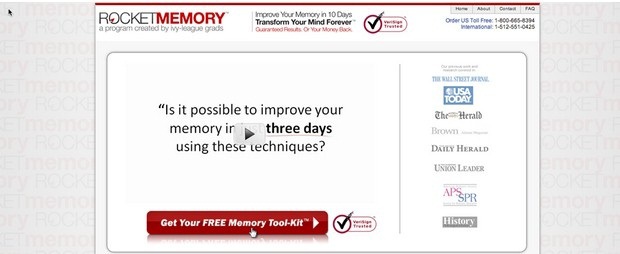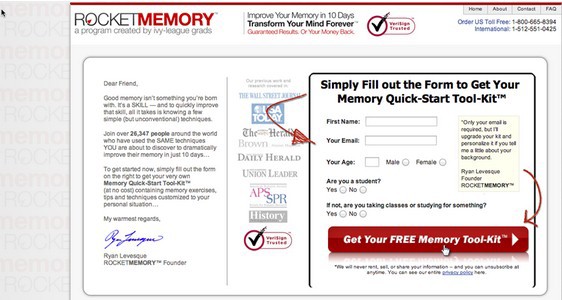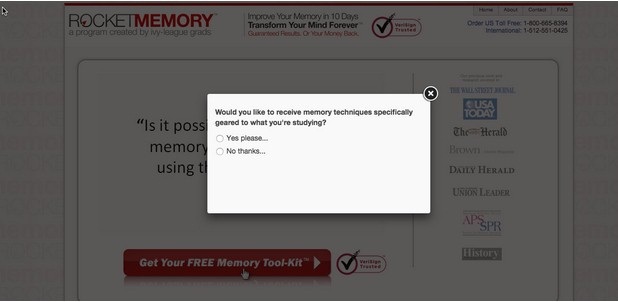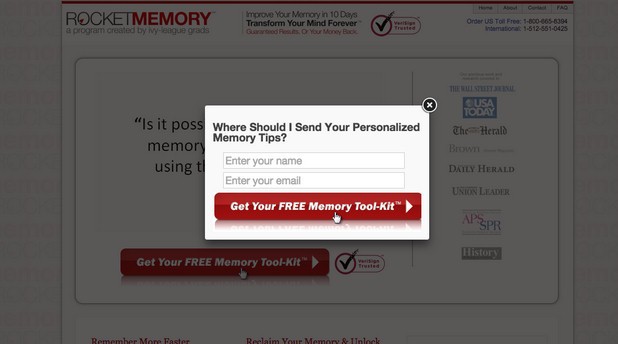Who steals your leads?

As soon as the business has a sales funnel, the game begins called “optimization”. Often, it resembles throwing during a disaster: “aaa, what to grab ???” What to test and optimize: design, title, texts, or offer? Ok, they thought, changed, tested, and the bounce rate is still off scale. Even if the offer, the texts and design are quite acceptable. What invisible goblins steal leads? We understand the specific example of the experts CrazyEgg.
The purpose of the landing page is to get visitors' contacts (name, email, phone). At this moment, a cascade of fears collapses in the user's head: “Why do they need my mail? Will she get to spammers? And what if this is a hoax? ”Do not take them personally, this is an instinctive reaction to protect your personal space. Human psychology is a tricky thing - we don’t do what we don’t do. And leads from you float away. Given that the offer itself is tempting, there is interest in the product.
What's the matter
')
You probably heard about the experiment with a frog in boiling water. It is placed in a vessel with cold water and then slowly, step by step, raise the temperature by a certain number of degrees. The frog does not feel threatened, because the process is proceeding gradually.
Similarly, our consciousness resists harsh external challenges and perfectly adapts to successive changes. This mechanism also works in marketing.
Marketing funnel - these are small steps to eliminate customer stress towards high conversion.
The problem is that the brain sees any new opportunity as a threat. At this point, rational thinking is practically turned off, so it is useless to put pressure on reducing costs, increasing sales and other trivial benefits.
Small steps
This method is proposed by Robert Maurer in his book, How One Little Step Can Change Your Life: The Way of Kaizen. What is it? People love to learn something new about themselves, which is why tests in the spirit of “Who would you be in the Game of Thrones” are so popular? On the landing page you should not frighten users with far-reaching intentions. When you immediately ask for a name and e-mail, it is hitting "head on." The first priority is to unrestrictively eliminate anxiety.
CrazyEgg experts cite as an example the RocketMemory memory development service. Here is what their landing page looked like:

The CTA button offers a free memory development tool. Upon transition, the following form opens:

Conversion - just above 5%.
Incredible transformation
Marketers team decided to divide the process into five small actions. They played on the power of curiosity and instead of a banal page with a banal lead-form, they invented a “Self-Discovery Landing Page”. Here are the five steps:
Step 1. View video
The offer was left the same (see the first screenshot) - “Is it possible to develop your memory in three days using these techniques?”
Incitement of curiosity prompted users to the next action.
Step 2. Select
Here the user is asked to agree whether he wants to get the magic techniques.

Step 3. Easy Questions to Involve
When we answer questions like “Are you a man or a woman?” In online tests, we don’t get tense at all. At the same time, curiosity delays to go further.
Step 4. Clarifying questions for segmentation
They allow you to assign a user to a specific category. In this case, the developers clarify why and why he needs memory development (due to age, for study, etc.)

Step 5. Lead-form
And finally, the capture form with the phrase “Where can we send your personal recommendations?” The person has already answered several questions and now it’s logical that he wants to know the results. Contact information is collected so naturally and painlessly.

But the results of the new approach shocked the most:

The form conversion increased almost 4 times, to 19% (!). At the same time, the cost of attracting one lead fell by 76%. In fact, nothing supernatural, just the power of micro obligations.
Commentary by the head of Yagla.ru Alexander Alimov
Great technique, but what about those who have a “single-level” landing page? According to our observations, the lead form and the CTA button are the most stressful elements. And much depends on the formulation of the appeal. Of course, considering what you give to the user.
"Buy", "Order" and other hints on payment most of all cause rejection, even in the online store. By the way, they can be mitigated with the help of favorable conditions for the buyer. "Order with delivery to home", for example.
“Send”, “Leave an application” - too sluggish, do not motivate. “Calculate” is much more effective, but the share of stress remains. Everything connected with the need for some action causes resistance.
The standard formula “Get a free consultation” in different niches gives different results. At the same time she has become boring to everyone. As they say, does not "light".
On one of the landings of our clients (buying and exchange of cars) using the Yagla service , we tested 3 options:
“Get a free consultation”
"Calculate the cost of redemption"
"Learn the cost of redemption"
results
"To know the cost of redemption" - 10.95%;
“Calculate the cost of redemption” - 8.63%;
“Get a free consultation” - 6.65%.
“Calculate the cost of redemption” - 8.63%;
“Get a free consultation” - 6.65%.
Source: https://habr.com/ru/post/293350/
All Articles